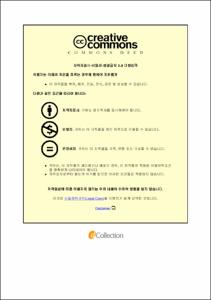Study of Water Droplet Splashing Phenomena on Lubricant Infused Surfaces with Micro/Nano-Textures
- Alternative Title
- 마이크로/나노 구조가 있는 윤활제 주입 표면에서의 액적 스플레싱 현상에 대한 연구
- Abstract
- In this study, we have investigated the droplet impact dynamics on the well-designed textured surfaces. Hydrophobic micro and micro/nanotextures are fabricated using deep reactive ion etching (DRIE) and the black silicon method. Lubricant infused surfaces (LIS) are prepared by deposition of Krytox (GPL-101, GPL-105, GPL-107) oil on the micro/nano texture. A high-speed camera was used to record the drop impact events on the surface. Firstly, we have focused on micropillar spacing and diameter on the critical Weber number of droplet splashing. Results show that droplet splashing is facilitated on the sparse pillars whereas delayed on the dense pillars. Here, we suggest an explanation of how pillar spacing and diameter affect drop splashing.
We demonstrate that large pillar spacing has an easy penetration of liquid and airflow outlet from the pillars. This causes instability at the edge of the spreading droplet due to non-dimensional air-liquid flow velocity (Uair/U0), attributed to the Kelvin-Helmholtz instability mechanism. Besides, an enhancement of droplet splashing with the increase of micro-pillar diameter was occurred due to the reduced capillary force, which makes an easy penetration of liquid between micro-pillars and creates droplet splashing during spreading due to the disturbance of micro-pillars. Here it is noted that micropillar diameter has little effect on the reduction of Wecr than pillar spacing. Moreover, an early droplet splashing was observed on micro/nano-textured surfaces compare to micro. This happens due to nano-textures, which create a very high capillary pressure than dynamic pressure. So impacting droplet could not penetrate in between the nanopillars. Hence, nanopillars' presence causes the slip boundary condition, reducing the friction loss of airflow and increasing in (Uair/U0). This renders the K-H instability and splashing earlier when compared to that on the solely micro-textured surface.
Also, droplet splashing events are observed on the lubricant-infused surfaces (LIS) for low viscosity oils. The slip velocity on LIS surfaces decreases with the increase of lubricant viscosity as uslip(101) > uslip(105) > uslip(107). Therefore, an increase in slip velocity on low viscosity LIS101 facilitates the drop splashing earlier than high viscosity lubricant LIS105 and LIS107. Besides, a very high critical Weber number of droplet splashing on LIS may be attributed to the greater adhesive force on LIS surfaces. Large adhesive force may suppress and delay the droplet splashing event on LIS.
Furthermore, droplet spreading and retraction dynamics are observed on prepared surfaces. It is noted that spreading behavior is independent of the surface characteristics. Whereas, retraction speed of droplets appears to decrease on LIS than micro and micro/nanotextured surfaces. Here hydrophobicity may reduce the retraction time. Micro/nanotextured surfaces have the fastest retraction speed than other surfaces because there are less solid-liquid contact and almost no induced friction. Besides, LIS 107 shows a higher retraction speed than LIS101 and LIS105. This effect may be attributed to the damping effect during the retraction at the droplet's wetting ridge.
Droplet impact on hydrophobic surfaces has a diverse range of applications, including inkjet printing, spray coating, erosion of turbine blades or aircraft, etc. Besides, LIS technology owns other exceptional properties such as anti-icing, antifrost, self-healing, etc. Droplet-based microfluidics has wide applications in food and chemical industries, medical devices, and surface antifouling. So the versatility of hydrophobic and LIS surfaces needs further research for more applications.
- Issued Date
- 2021
- Awarded Date
- 2021. 8
- Type
- Dissertation
- Publisher
- 부경대학교
- Affiliation
- 부경대학교 대학원
- Department
- 대학원 기계설계공학과
- Advisor
- Dong In Yu
- Table Of Contents
- 1. Introduction 1
1.1.Background 1
1.2.Research Objectives 4
2. Literature Review 5
2.1 Effect of Surface Wettability 5
2.2 Effect of Lubricant Infused Surface 11
2.3 Effect of Impact Velocity 15
2.4 Droplet Impact Dynamics 16
2.5 Droplet Spreading Dynamics 19
2.6 Droplet Retraction Dynamics 22
2.7 Droplet Splashing Dynamics 31
2.7.1 Droplet splashing on smooth and rough surfaces 31
2.7.2 Droplet splashing on textured surfaces 42
2.7.3 Droplet splashing on lubricant infused/sticky surfaces 48
3. Experimental Methodology 53
3.1 Surface Preparation 53
3.2 Measurement of Geometrical Morphology 59
3.3 Experimental Facility 62
4. Experimental Analysis and Results 64
4.1 Droplet Impact on Micro and Micro/Nano Textured Surfaces 64
4.1.1 Effect of roughness ratio (fC-B) on Wecr 68
4.1.2 Effects of pillar spacing and diameter on Wecr 70
4.1.2.1 Mechanism of droplet splashing concerning large pillar spacing 72
4.1.2.2 Mechanism of droplet splashing based on the large pillar diameter 76
4.1.3 Comparison of Wecr on micro and micro/nano textured surfaces 78
4.2 Droplet Impact on Lubricant Infused Micro/Nano-Textured Surfaces (LIS) 81
4.3 Comparison Between Micro-/Nano Textured and Lubricant Infused Surfaces 85
4.3.1 Comparison of critical splashing Weber numbers (Wecr) 85
4.3.2 Comparison of droplet spreading and retraction behavior 90
5. Conclusions 93
References 95
Publications: 104
- Degree
- Doctor
- Files in This Item:
-
-
Download
 Nano-Textures.pdf
기타 데이터 / 4.4 MB / Adobe PDF
Nano-Textures.pdf
기타 데이터 / 4.4 MB / Adobe PDF
-
Items in Repository are protected by copyright, with all rights reserved, unless otherwise indicated.